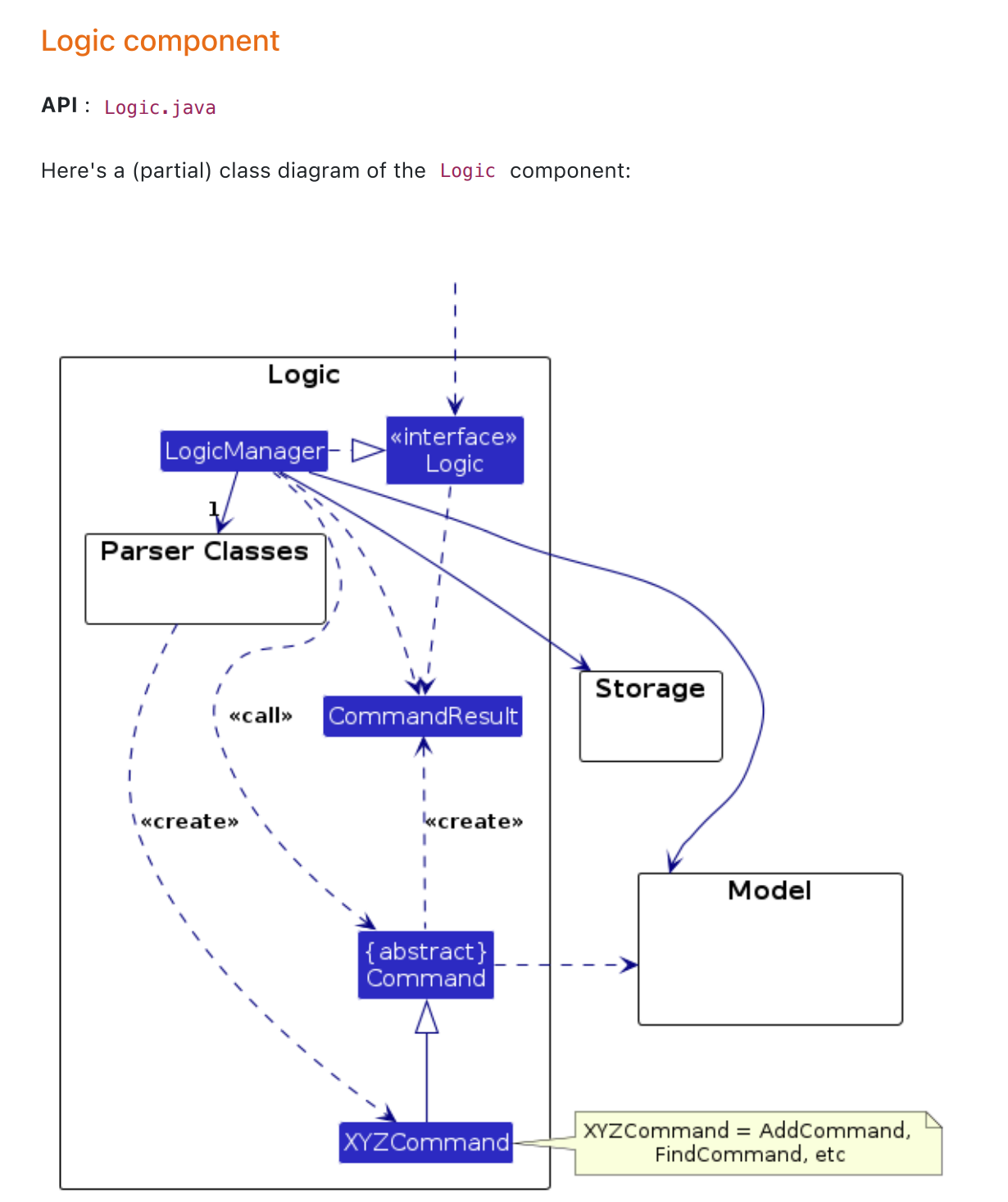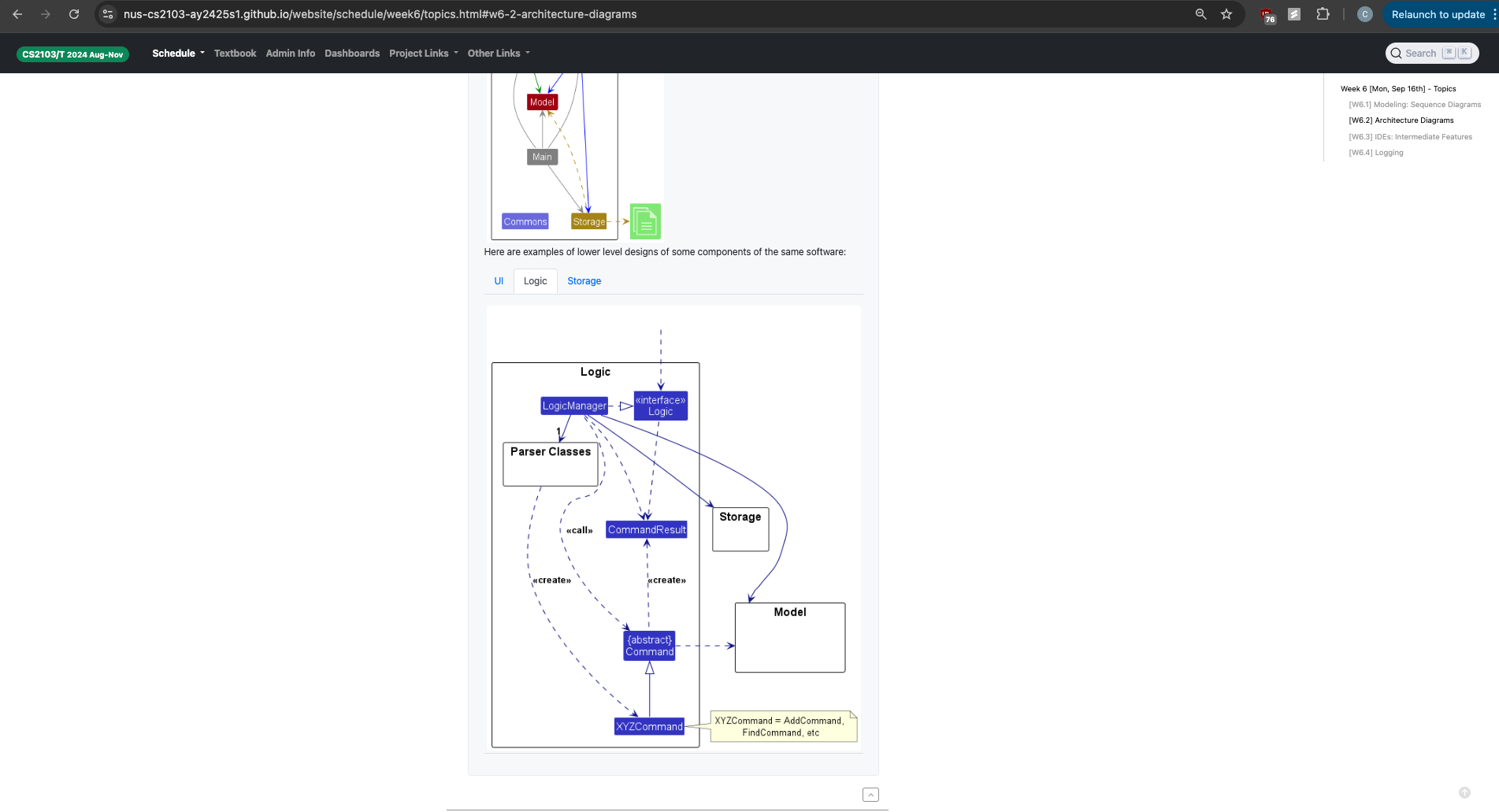Team's Response
No details provided by team.
The 'Original' Bug
[The team marked this bug as a duplicate of the following bug]
Incorrect format for UML class diagram
The UML class diagram for
Logiccomponents uses double \< and > in labels for dependencies:
This does not follow the format for UML diagrams that was taught, possibly confusing readers as to what the symbol means.
[original: nus-cs2103-AY2425S1/pe-interim#1661] [original labels: severity.Low type.DocumentationBug]
Their Response to the 'Original' Bug
[This is the team's response to the above 'original' bug]
The exact same diagram can be found in the course website. We are referring to the course website directly. The exact same diagram can be found under: Week 6 Topics > w6.2c (multi-level design) > "Logic"
Furthermore, it is also valid notation as seen here. https://github.com/nus-cs2103-AY2425S1/forum/issues/806
Items for the Tester to Verify
:question: Issue duplicate status
Team chose to mark this issue as a duplicate of another issue (as explained in the Team's response above)
- [ ] I disagree
Reason for disagreement: [replace this with your explanation]
## :question: Issue response Team chose [`response.Rejected`] - [x] I disagree **Reason for disagreement:** Thanks for the response. While the notation is used in a diagram shown, it was not taught to us or covered in CS2103T as the lecture notes does not go through what these are in association context. Attached below is a respond from prof I have asked with respect to this notation as I noticed it within my own team's diagram.  If a notation is not covered or used in CS2103T course, it is considered a UML notation bug. While the diagram was from existing AB3 implementation, do note that it is explicitly stated that even bugs inherited from AB3 needs to be fixed and in fact it was later changed in AB4 further solidifying the presence of this as an issue. Attached below is the notation being changed in AB4.   While UML Stereotype was mentioned as an example in the part where Singleton was taught, it was never taught or even shown to be used in dependency/association arrow context. Thus using it here is inferring that it could be used even though there was no mention of it in the lecture notes. Attached below is a screenshot of the only instance at which UML Stereotype was mentioned in lecture notes. As seen below, there is no indication that it could be used as an association/dependency label. As such if one were to use it in that sense, it is only through inference, making it unfair for the testers as quoted by Prof. 
## :question: Issue severity Team chose [`severity.Low`] Originally [`severity.Medium`] - [x] I disagree **Reason for disagreement:** Reason for medium severity: it does hinder readers and it is not purely cosmetic as they would need to google and check what stereotype notation means and which direction to read as it is not covered in the course. Given that this occurred in not 1 but 2 diagrams that are of importance, a medium severity is justified.


Background
There was use of notations not compliant with notations covered in the course below are the screenshots attached, they are primarily the 2 logic UML diagrams used in page 5 and 6 of the Developer Guide
Test case
null
Expected output
Use of proper notation/notations that are compliant with notations covered in the course.
Reason for severity
Would give a low severity, however given that this mistake was reflected on 2 UML diagrams which are very crucial in the Developer Guide a Medium severity is appropriate.